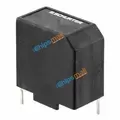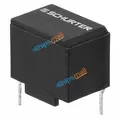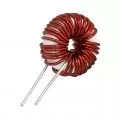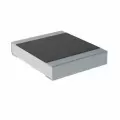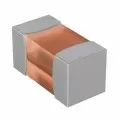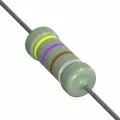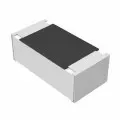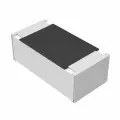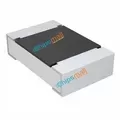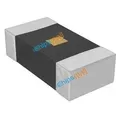OUTLINE:
A Comprehensive Guide to Passive Communication Components
 262
262In this era where everything can be connected to the internet, the smooth operation of communication systems relies on a bunch of things that work perfectly together.
People often only see those "star" components, such as transistors and amplifiers, but in fact, those unknown passive communication components are also super important.
They are like heroes behind the scenes, such as resistors, capacitors, inductors, filters, etc., all working silently behind the scenes, making our signals both stable and efficient.
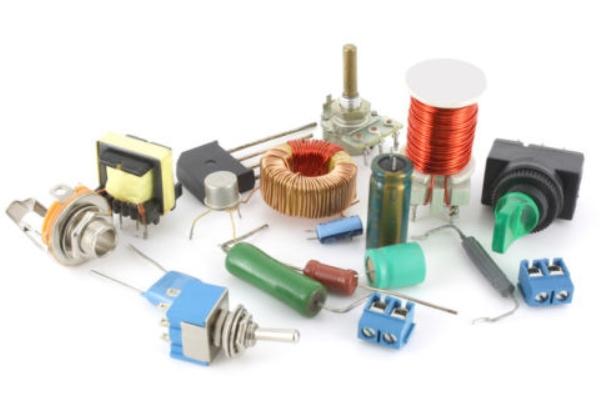
Image Source: Hackatronic.com
Whether you are engaged in RF design, working in the telecommunications industry, or playing with electronic devices on a daily basis, understanding the roles and uses of these passive communication components can take your device performance to the next level.
Today, let's talk about the unsung heroes in these communication technologies, see what their functions are, how they work, and how they are applied in real life.
Simple Example for Passive Communication Components
Among those high-tech devices such as wireless and WiFi, there is a group of "low-key heroes" who are passive communication components (let's call them "little masters who work silently"). These little experts may not speak or be very conspicuous, but without them, our signal transmission would be in chaos.
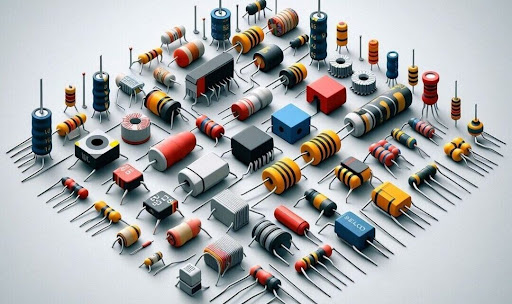
Image Source: Wikipedia.com
Stable current team leader (resistor):
Just like the team leader in the class who always manages to calm everyone's emotions, the 'Stable Flow Team Leader' is doing this in the circuit. It keeps an eye on the current and ensures that the signal and antenna are well coordinated, so that the signal can be transmitted smoothly without any garbled or lost messages.
Signal cleaner (capacitor):
The 'signal cleaner' is like a cleaning lady in the circuit, responsible for clearing out unwanted 'junk signals'. Has there been a significant fluctuation in the power supply? It comes to calm down. Do you want to mix in signals with incorrect frequencies? It can recognize it at a glance and then reject it. In this way, the signals we receive will be clean and clear.
Energy storage tank (inductor):
An energy storage tank is like a bank in an electrical circuit, providing energy when needed. It can also collaborate with "signal cleaners" to create a magical phenomenon called "resonance", just like two people singing together, and when they reach a certain pitch, the sound becomes particularly loud. This is very useful for us to choose specific frequencies, such as when tuning a radio, it's like an energy storage tank helping us find the correct channel.
Gate Guard (RF Filter):
The 'gate guard' is like a security uncle in the circuit, responsible for guarding the gate and determining who can enter and who cannot enter based on frequency. It only allows signals of specific frequency bands to pass through, and nothing else can mix in. In this way, our network can remain stable and smooth, without experiencing lag or poor signal.
Practical example: Wi Fi router at home
You know what? Our Wi Fi router at home also hides these 'little masters who work silently'. They work silently, processing those high-frequency signals. Just like a team working together, the 'steady current team leader' is responsible for ensuring stable power supply; The "signal cleaner" and "energy storage tank" work together to ensure that only the correct frequency is used for communication; The 'gate guard' is responsible for guarding the gate and preventing any interference signals from entering. In this way, we can enjoy a stable and smooth Wi Fi network at home!
Simple Example for Passive Components in Wireless Communication
Passive components are crucial for ensuring stable signal transmission in wireless communication systems, such as Wi Fi routers, Bluetooth devices, and smartphones.
1. Resistance: controls the flow of current, ensures the consistency of signal output in communication circuits, and prevents signal distortion.
2.Capacitor: filters out noise and stabilizes voltage, allowing only the desired communication frequency to pass through.
3.Inductance: Tune the circuit by selecting an appropriate frequency band (such as 2.4 GHz or 5 GHz for Wi Fi).
4.Antenna matching network: Combining capacitors and inductors to match antenna impedance, optimize signal strength, and reduce power loss.
5.Filter: A bandpass filter isolates a specific frequency range, minimizes interference from neighboring devices, and improves signal clarity.
The Difference between Active & Passive Communication Components [In detail]
In communication systems, both active and passive components are very important, but they play different roles and have different functions and characteristics. Here is a detailed explanation of the differences between them, to make it easier to understand:
1.Power demand
Active components:
It needs an external power source to work. They use externally provided energy (such as batteries or power sources) to control or amplify signals.
For example, transistors can amplify weak signals in radios or mobile phones.
Passive components:
It can work without the need for an external power source. They will modify the signal in various ways (weakening, filtering, storing energy) based on the received signal, but will not add any external energy.
For example, resistors, capacitors, and inductors can filter and stabilize signals, but they do not amplify them.
2. Function
Active components:
It can actively control the flow of current and amplify or switch signals. They can convert energy from one form to another.
For example, amplifiers in RF systems can enhance weak signals, ensuring that signals can be transmitted further.
Passive components:
Passively modifying electrical signals by storing or consuming energy. They cannot amplify signals, but they can filter or adjust signals.
For example, a filter composed of capacitors and inductors can allow certain frequency bands to pass through while blocking other frequency bands.
3. Magnifying ability
Active components:
Can amplify signals. They use external power sources to increase the amplitude of weak signals, making them stronger and easier to further transmit or process.
For example, operational amplifiers in audio or communication systems can increase signal strength and ensure clear transmission.
Passive components:
Cannot amplify the signal. On the contrary, they typically reduce or maintain signal strength (such as reducing current through resistance or smoothing voltage fluctuations through capacitance).
For example, resistors can limit the current in a circuit, protect components, or control signal levels.
4. Linearity
Active components:
Usually non-linear. Their output is not always proportional to the input, especially in devices such as transistors or diodes that switch states, non-linear effects can occur.
For example, a diode conducting only in one direction can cause nonlinear behavior in the circuit.
Passive components:
Usually linear. The relationship between voltage, current, and impedance is usually proportional and predictable, which means their behavior is stable under various conditions.
For example, resistance follows Ohm's law, providing a linear relationship between voltage and current.
5. Control of signals
Active components:
Capable of actively controlling the flow of signals. They can turn on or off signals, amplify signals, and modulate signals, which is crucial in devices such as transceivers, processors, and transmitters.
For example, transistors can switch and amplify signals in communication systems.
Passive components:
Not controlling or generating signals, but influencing the behavior of signals by modifying their amplitude, phase, or frequency.
For example, the inductance in the tuning circuit can adjust the frequency of the signal in the radio receiver.
6. Examples of Active and Passive Components
Active components:
Transistor: amplifies and switches electrical signals in mobile phones, radios, and amplifiers.
Integrated Circuit (IC): Used for modulation, signal processing, and control functions in communication systems.
Diode: It converts alternating current into direct current in a power supply and serves as a switch in communication circuits.
Passive components:
Resistance: Limits current and adjusts signal level in communication devices such as wireless communication equipment.
Capacitor: stores energy and filters noise in RF circuits and signal processing systems.
Inductance: Helps manage specific frequencies in radio and other wireless systems in tuning circuits and filters.
7. Application in Communication Systems
Active components:
The stages used for amplification, modulation, and signal processing, such as amplifiers, modulators, transceivers, and oscillators. These components enable communication signals to be transmitted and processed over long distances.
For example, in mobile phones, transistors in amplifiers can enhance signal strength for communication with distant base stations.
Passive components:
Used for filtering, signal conditioning, and impedance matching. They help stabilize signals, reduce noise, and ensure correct frequency transmission or reception.
For example, in Wi Fi routers, passive components such as filters can ensure the use of the correct frequency band (2.4 GHz or 5 GHz) for communication, while eliminating interference from unwanted frequency bands.
FAQs: How Do Passive Communication Components Affect Signal Transmission
Passive communication components, including resistors, capacitors, inductors, and filters, significantly influence signal transmission in the following ways:
Signal conditioning:
Capacitors are like signal cleaners, they can filter out noise and make signals stable. And inductance, on the other hand, is like an energy steward, maintaining signal integrity by storing and releasing energy.
Filter out unwanted frequencies:
Filters composed of capacitors and inductors are like gatekeepers for signals, selectively releasing or blocking specific frequencies to ensure that only the frequency band we want is transmitted, making the signal clearer.
Impedance matching:
Resistors, capacitors, and inductors are like translators in circuits, helping various components reach a "linguistic" consensus, preventing signal reflection and loss, which is crucial in RF communication.
Attenuation:
Resistors are like volume adjusters in circuits, they can reduce the strength of signals, prevent sensitive components from being overwhelmed by excessive signals, and ensure that the signal level in the entire circuit is within a controllable range.
Signal timing and phase offset:
Capacitors and inductors are like time regulators and phase converters for signals, introducing phase offsets to help maintain correct timing and synchronization of signals in communication systems.
Energy storage:
Capacitors and inductors are like small batteries in circuits, they can store and release energy, maintain stable power flow, and prevent any sudden fluctuations that may cause transmission errors.
What Advancements in Technology Have Impacted the Design and Efficiency of Passive Communication Components
Recent technological advancements have significantly enhanced the design and efficiency of passive communication components:
Advanced Materials: New high-permittivity dielectrics and low-loss substrates improve performance and allow for smaller, more efficient designs.
Miniaturization Techniques: Innovations like surface mount technology enable the creation of compact components, facilitating integration into smaller devices without sacrificing performance.
3D Printing: This allows for complex geometries and rapid prototyping, improving heat dissipation and optimizing electrical performance.
CAD Tools: Enhanced design and simulation software enable accurate modeling, helping optimize performance and reduce development time.
Integrated Passive Components: Integrating resistors and capacitors within ICs minimizes size and enhances signal integrity by reducing parasitic effects.
Smart Materials: Developments in materials that adapt to environmental changes provide dynamic performance and enhance component functionality.
Advanced Manufacturing: Techniques like photolithography enable precise fabrication, leading to improved consistency and performance characteristics.
IoT and Wireless Demand: The rise of IoT has spurred the need for efficient, compact components tailored for low-power and high-frequency applications.
Energy Efficiency Standards: Growing energy efficiency awareness drives the development of components that minimize energy loss, improving overall system performance.
What Materials Are Used in Passive Communication Components

Image Source: ES Components
Let's talk about passive communication components such as resistors, capacitors, inductors, and filters, which are made of different materials that can affect their performance, size, and efficiency. Here are the commonly used materials in these components:
1. Resistance
Carbon film resistor: It is made by mixing carbon and resin together, and can be used in any situation.
Metal film resistor: Especially accurate and stable, it is a thin layer of metal commonly used in precision instruments.
Wire wound resistor: It is a wire wound around an insulating core, which can handle high power and is very stable.
Thick film resistor: It is commonly used in surface mount technology to apply a thick layer of resistor material onto a substrate.
2. Capacitance
Ceramic capacitors: commonly found in high-frequency circuits, they are stable and reliable. There are types such as C0G (NP0) and X7R.
Electrolytic capacitor: made of metal oxide layer and electrolyte, with large capacity but poor frequency stability.
Tantalum capacitors: small size, large capacity, and better voltage stability than electrolytic capacitors.
Thin film capacitor: made of thin plastic film, with low loss and high stability, it is particularly suitable for timing and filtering circuits.
3. Inductance
Ferrite core inductor: used in high-frequency circuits to increase inductance and reduce losses.
Iron core inductor: Low cost, performs well in power inductors, commonly used in low-frequency circuits.
Hollow core inductor: does not use magnetic materials, has low loss, suitable for high-frequency circuits, but has a larger volume.
Stacked magnetic core inductor: made of multiple layers of magnetic materials, it can reduce eddy current losses and is used in power circuits.
4. Wave Filter
Passive RC filter: A combination of resistors (usually carbon film or metal film) and capacitors (often ceramic or thin film) can be used to create low-pass, high pass, or band-pass filters.
LC filter: inductor and capacitor, inductor can be ferrite or hollow, capacitor can be ceramic or thin film.
SAW filter: Use piezoelectric materials such as lithium niobate or quartz to filter high-frequency signals.
Final Verdict
Passive communication components are essential elements in modern electronic systems, playing crucial roles in signal conditioning, filtering, and impedance matching. Their effectiveness relies on advancements in materials, design techniques, and manufacturing processes, enabling improved performance, miniaturization, and integration. Understanding the functions and applications of these components is vital for optimizing communication systems, ensuring reliable and efficient transmission of signals across various technologies. As innovation continues, passive components will remain pivotal in enhancing the capabilities of future communication devices.

Disclaimer: The views and opinions expressed by individual authors or forum participants on this website do not represent the views and opinions of Chipsmall, nor do they represent Chipsmall's official policy.

share this blog to:


